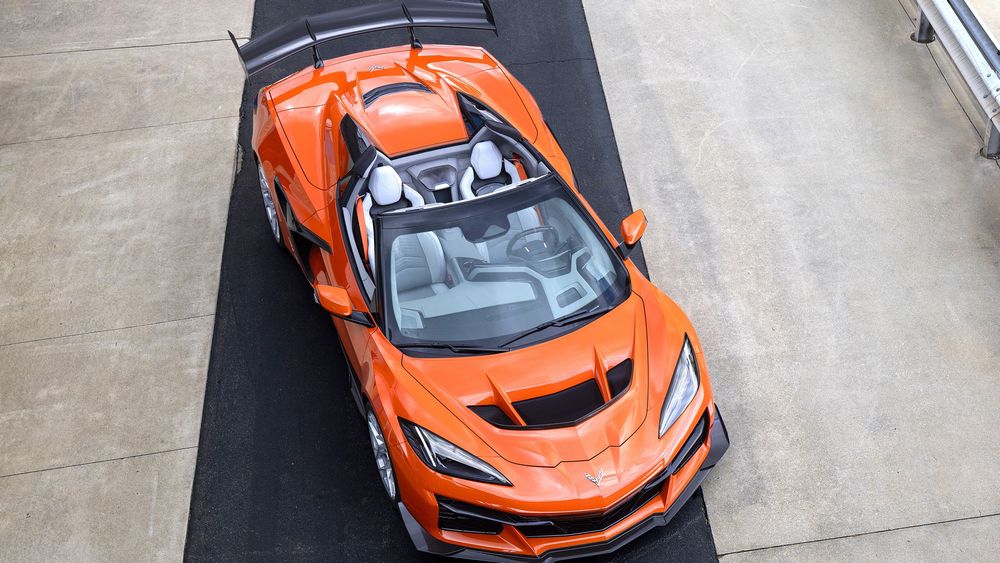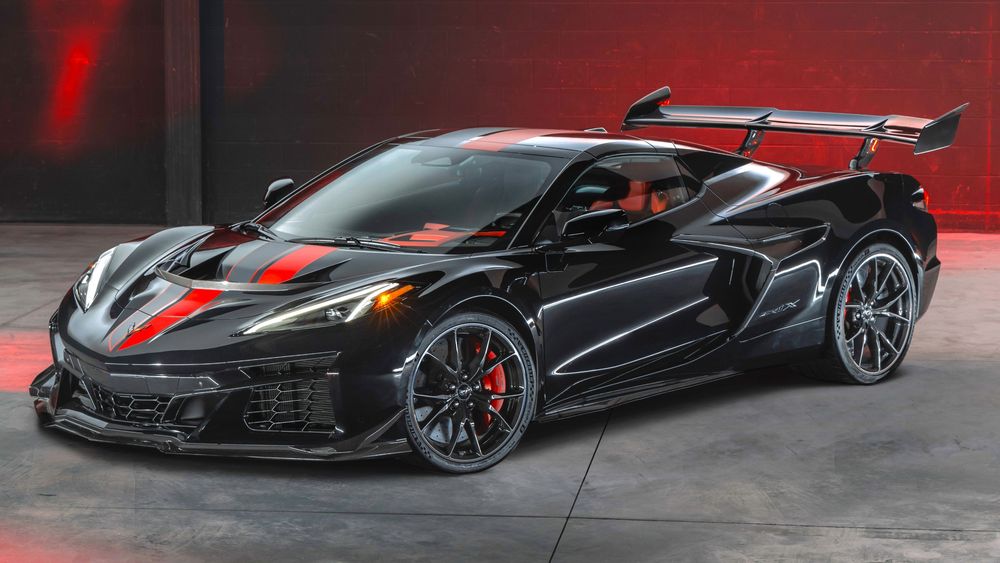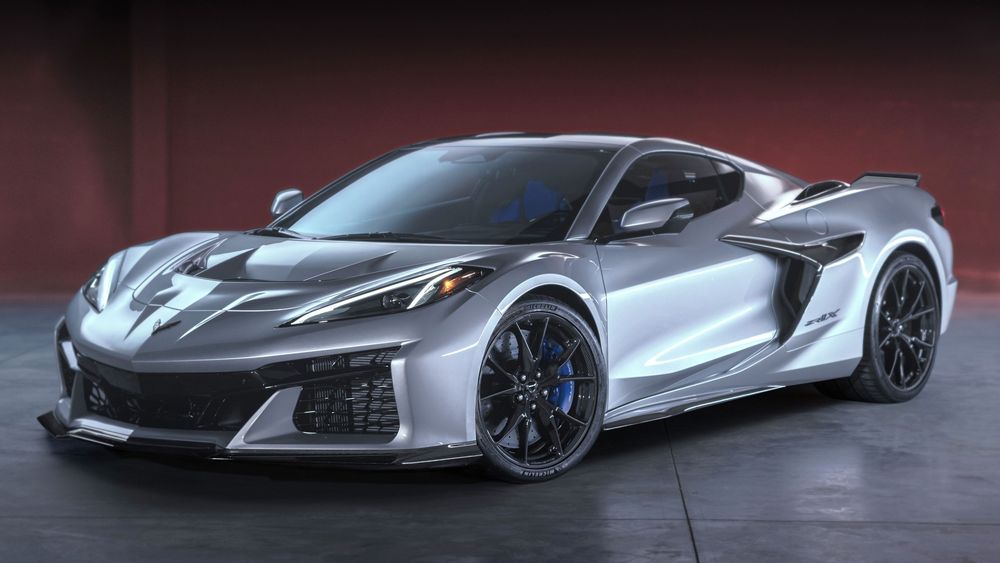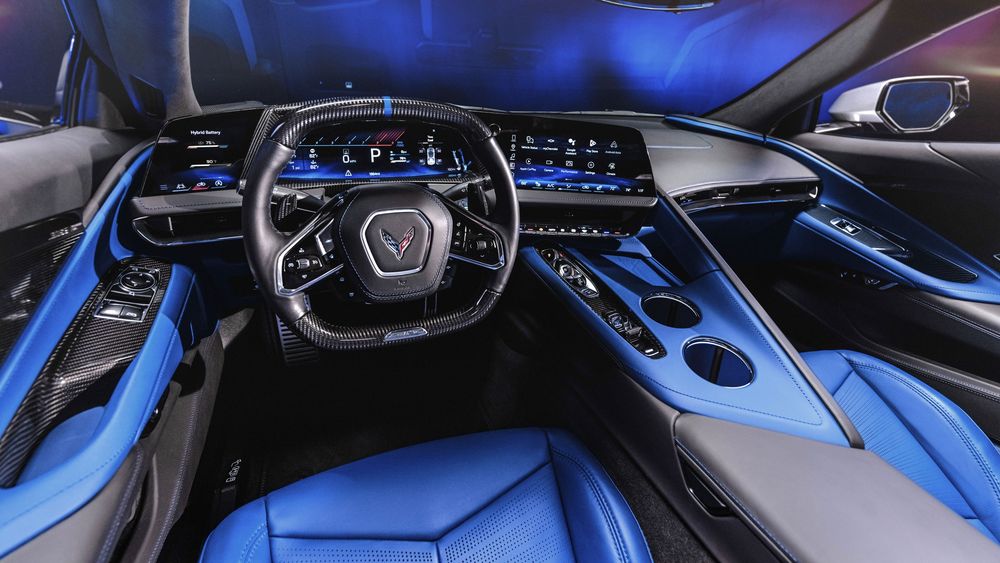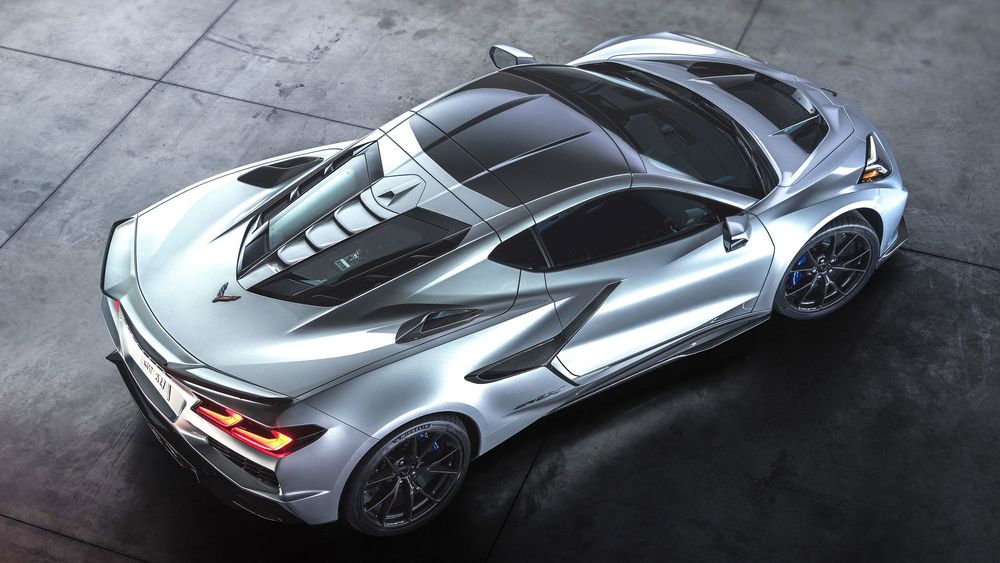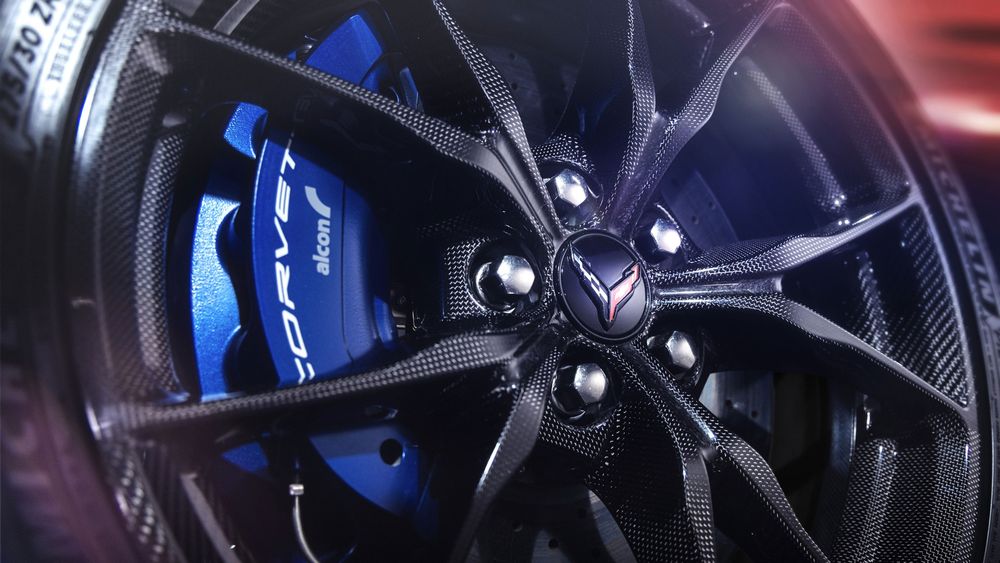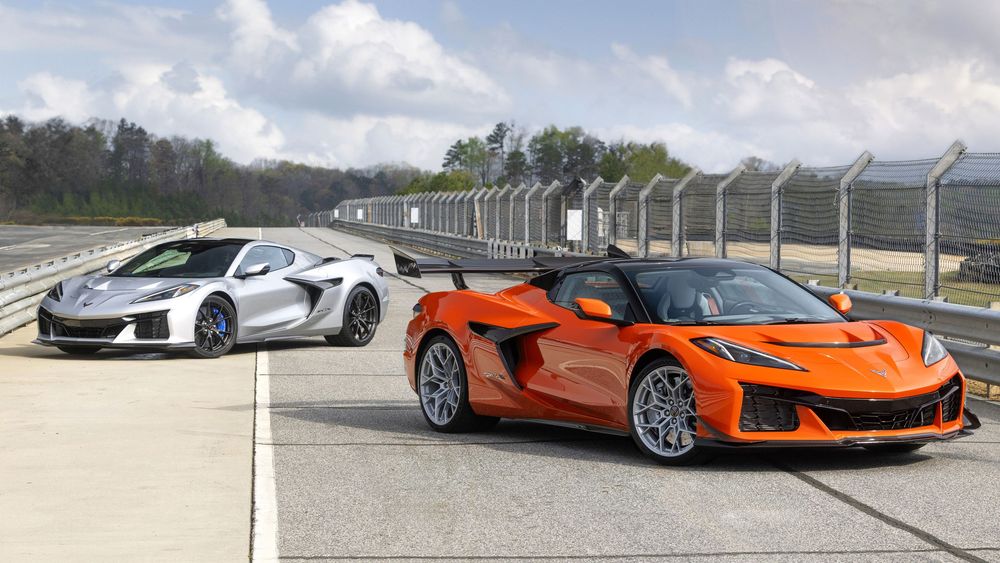2026 Corvette ZR1X Boasts 1,250 HP, All-Wheel Drive, and Sub-9-Second Quarter-Mile Times!
The twin-turbo LT7 Gemini V-8 is back, and it has all-wheel-drive help from the E-Ray’s parts bin.
If you thought Chevy’s C8 ZR1 was a mic-drop moment with its 1,064 hp and nine-second quarter-mile performance, we’re here to tell you Chevrolet bought a bigger mic and a louder PA system for what promises to be a stupefyingly loud thud that will be heard ’round the world. The 2026 Chevy Corvette ZR1X makes a combined 1,250 hp by integrating the Corvette E-Ray’s front-drive battery electric axle with the ZR1’s mid-engine rear-drive 5.5-liter twin-turbo direct-injected LT7 that makes 1,064 hp and 828 lb-ft of torque. And just like the E-Ray’s layout, the ZR1X’s front and rear powertrains are not mechanically connected, and the EV portion is powered by a 1.9-kWh battery that supplies an additional 186 hp and 145 lb-ft of torque. (That’s 26 hp and 20 lb-ft more than the E-Ray’s front setup.) Charging for the front-drive axle is internal with juice being generated by the gas-powered LT7 rather than your local power company.
AI Quick Summary
The 2026 Corvette ZR1X offers 1,250 hp with a twin-turbo V-8 and electric front axle. It boasts under 2-second 0-60 mph and sub-9-second quarter-mile times. Features include advanced braking, aerodynamic enhancements, and performance packages for enhanced track capabilities.
This summary was generated by AI using content from this MotorTrend article
Read Next
0:00 / 0:00
GM quotes some eyebrow-raising performance numbers for the ZR1X with an estimated 0–60 time under two seconds. The quarter mile comes up in under nine seconds at a trap speed of over 150 mph. While we have yet to test the standard 2025 Corvette ZR1, Chevy claims that car will move from 0 to 60 in 2.3 seconds and the quarter mile in 9.6 seconds. The ZR1X would extend those numbers significantly into the netherworld of hypercar performance. Chevy hasn’t said what the ZR1X’s top speed is (the standard ZR1 is reported to be 233 mph), but when equipped with the high-downforce Carbon Aero package that adds dive planes, underbody strakes, a hood gurney lip over the front heat extractor, and a highly effective rear wing, the ZR1X is capable of 1,200 pounds of downforce at top speed, all of which helps aid stability.
At the heart of the ZR1X is the ZR1’s magnificent LT7, a 5.5-liter V-8 with a forged flat-plane crankshaft, finger-follower valvetrain, dry-sump lubrication, and dual 76mm turbochargers aided by a combined manifold-turbo exhaust design. This “maniturbo” combines the exhaust manifold and turbocharger housing to get the turbos as close to the exhaust valves as possible and improves throttle response by decreasing the time needed to build boost. Dynamic anti-lag controls maintain turbo speed when off throttle in certain situations so boost is available rapidly when the throttle is reapplied.
GM senior vice president Ken Morris notes that the ZR1X and the ZR1 together comprise the most powerful American performance car duo of any auto manufacturer. “From day one, we designed the mid-engine Corvette architecture with the ZR1X in mind,” Morris said. “This is the most revolutionary platform in Corvette history, supporting the widest range of American sports cars and delivering world-class performance at every level.”
Chevy’s unique solution to hybridize the Corvette with a supplemental electric powertrain is a bit of a card trick that may put off some Corvette folks initially, but it does solve the biggest issue of needing to plug it in, obviating the need to charge the car. The ZR1X benefits from a high-voltage battery pack and electric motor driving the front axle. There is no physical connection between the two power sources, and charging takes place through regenerative braking from the front axle. The ZR1X’s battery pack, located low and centralized within the rigid spine of the chassis, was designed specifically to rapidly cycle between bursts of power and charging. The front axle is engaged up to 160 mph before disconnecting and is said to benefit the ZR1X’s quarter-mile acceleration stats and on-track balance.
The dual power sources on the ZR1X have provided an opportunity for Corvette engineers to optimize energy management and performance through some interesting technology. Engaging the Charge+ button adjusts the battery’s energy storage strategy for extended lapping and consistent eAWD output for a full tank of fuel while a press of the Qualifying button optimizes power strategy for the ultimate single lap time. A push-to-pass button calls all the available power on demand, but the real genius is in the ZR1X’s PTM Pro feature set, which turns off traction and stability control while invoking something called Regen Brake Torque Vectoring. This program recovers peak energy without sacrificing agility and works in conjunction with Front Axle Pre-Control, which actively manages the inside front brake pressure to enable maximum corner-exit traction.
As you’d expect, all this power has been backstopped by one of the most impressive brake packages we’ve seen at HOT ROD, and we’ve seen some monster brakes. Chevy’s new J59 braking package is included on ZR1X (optional on ZR1) and is a cleansheet design intended for superior heat resistance and ultra-responsive braking. Alcon 10-piston front and six-piston rear calipers are mated to 16.5-inch front and rear rotors—the largest rotors ever offered on Corvette. The rotors are carbon ceramic and are constructed with continuously woven carbon-fiber threads. This has allowed J59-equipped Corvettes to achieve 1.9 g of deceleration from 180 to 120 mph.
For those wanting the most on-track performance possible, Corvette fans can graduate from the standard ZR1X with Michelin PS4S tires to the ZTK Performance package, which features higher-rate springs, a firmer feel, and Michelin Pilot Cup 2R tires. If you’re keeping score and want your ZR1X maxed out for the racetrack, the boxes you’ll want to check on the ZR1X order form are the high-downforce Carbon Aero package and the ZTK Performance package, but you’ll need to stay tuned a bit more to find out how much it costs.
Johnny Hunkins, born 1963, grew up mainly in Greensboro, NC. Attended Southeast Guilford High School (Greensboro) and graduated in 1981. Received a BFA degree in Art with a concentration in Design from the University of North Carolina at Greensboro (UNC-G) in 1985. The son of a music teacher and a music composer, began playing guitar at age 6, meanwhile harbored companion interests in muscle cars, model car building, NASCAR racing, and drag racing. During and after attending UNC-G, worked as an auto service writer at Montgomery Ward Auto Express. Bought a Ford Mustang LX 5.0L in 1987 which he began modifying immediately, then started contributing freelance stories to Muscle Mustangs & Fast Fords (MM&FF) in 1991. Moved to New Jersey from North Carolina and became fulltime MM&FF tech editor in the fall of 1992. Helped create, then became editor of GM High-Tech Performance (originally High-Tech Performance) magazine in 1995. While at MM&FF, invented the popular “True Street” drag racing class used by many sanctioning organizations. Moved to California in 2003 to become editor of Popular Hot Rodding magazine. In July of 2014, became editor of Mopar Muscle magazine for the rebranded TEN network. Previous and current magazine projects cars: 1987 Ford Mustang LX 5.0 (Project Excalibur), 1989 Ford Mustang LX 5.0, 1987 Buick Regal Turbo-T (2 of them), 1993 Pontiac Firebird Formula (Project Thunderchicken), 1989 Pontiac Firebird Formula 350 (Project Magnum TPI), 1994 Chevy Camaro Z 28 (The Grape Of Wrath), 1976 Chevy Camaro (Project g/28), 1968 Chevy Chevelle (Street Sweeper), 1975 Chevy Laguna S-3 NASCAR clone, 1968 Chevy Nova, and 1968 Plymouth Valiant. Other interests include fine cigars, writing and recording rock music (Hunkins is an artist on the indy label Grooveyard Records), and mid-century modern architecture and design. Hunkins lives in Desert Hot Springs, CA.
Read More
